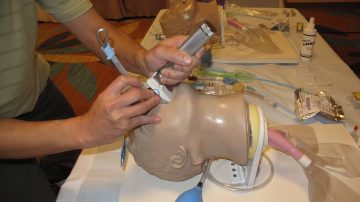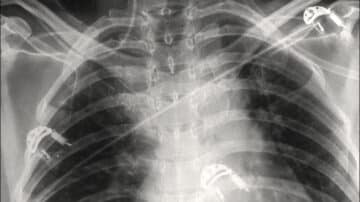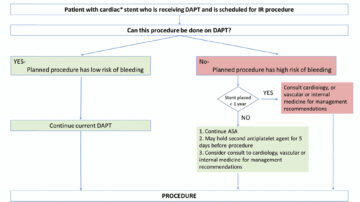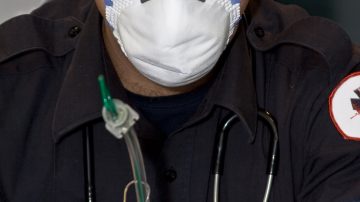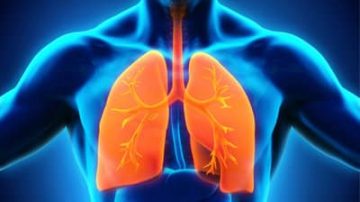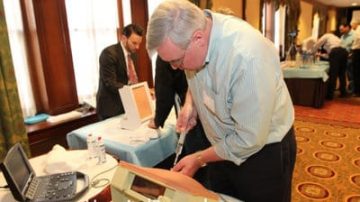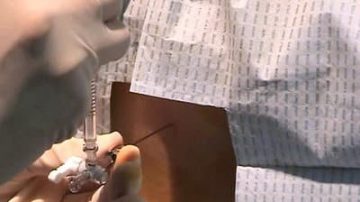TOP TEN AIRWAY MANAGEMENT PEARLS TO OPTIMIZE YOUR CHANCES OF SECURING AN AIRWAY Develop a difficult airway management plan Huddle with your nurse and respiratory therapist in advance to alert everybody what plan A/B/C/D are for the patient If plan…
Read MoreMalpositioned central venous catheters occurs in about 7% of central line placements. A malpositioned central line is any central venous catheter where the tip is located anywhere other than the superior vena cava (SVC) for internal jugular lines or subclavian…
Read MoreMore Articles – Cardiovascular diseases, Central line, Endotracheal Intubation, Featured Procedure, Gastrointestinal diseases, Glidescope Intubation, King Tube, Laryngeal Mask Airway, Lumbar Puncture, Mechanical Ventilation, Medical General, medical procedures, Paracentesis, Respiratory diseases, Thoracentesis
Simulation-based procedural training has been shown to improve procedural competence, safety, operator confidence and most importantly patient safety for every bedside procedure studied. Now, a new systematic review and meta-analysis confirms that simulation-based training in airway management improves procedural competence…
Read MoreThis blog summarizes the 2019 Society of Interventional Radiology (SIR) for Periprocedural Management of Image-guided Procedures with regards to thrombocytopenia, coagulopathies, antiplatelets and anticoagulation. The SIR guidelines are summarized as follows: Anticoagulation with heparin, LMWH, fondaparinux, argatroban, warfarin, DOAC, clopidogrel, ticagrelor…
Read MoreThe SARS-COV-2 pandemic started in January 2020 and has decimated the majority of U.S. hospitals for the past 18 months. The impact of COVID-19 has not only affected available hospital beds, but has limited the ability of hospitals to perform…
Read MoreMore Articles – Featured, Hospital Procedures, Medical General, medical procedures, Respiratory diseases
Informed consent can be challenging during “normal” times, but it has become increasingly complicated during the COVID-19 pandemic. The informed consent process ensures that a patient or their surrogate decision-maker understands the benefits, potential risks and any alternatives of a…
Read MoreMore Articles – Featured Procedure, Gastrointestinal diseases, Lumbar Puncture, Medical General, Oncology, Traumatology
According to recent studies, atraumatic needles (ATN) reduce the rate of post-dural puncture headache (PDPH) when compared to traumatic needles (TN – or bevel-tip needles such as Quincke needles) (27% vs 60%). Also, the mean duration of PDPH from ATN…
Read MorePatients diagnosed with cirrhosis are regularly admitted and readmitted to the hospital. Statistics show that the 90-day readmission rate is approximately 50%. A recent study analyzed the rate of readmission at 30-days and 90-days and the relevant causes among patients…
Read MoreMore Tags – central lines, central venous catheters, featured, femoral lines, HPC updates, IJ lines, subclavian lines
The internal jugular or subclavian veins have fewer combined mechanical or infectious complications for central venous catheter insertions compared with femoral vein CVC placements. Numerous organizations have proposed guidelines or central line bundles that have advocated preferential use of the…
Read MoreAccording to AASLD Practice Guidelines, all patients with cirrhotic ascites admitted to the hospital should have a diagnostic paracentesis to rule out spontaneous bacterial peritonitis (SBP). Treatment of SBP requires cefotaxime plus albumin 1.5 gm/kg on the first day and…
Read MorePatients may have anatomically difficult airways or physiologically difficult airways. Both anatomical and physiological factors can lead to peri-intubation complications. My goal for this blog is to describe the factors that may contribute to an anatomically difficult airway and clinical…
Read MoreDiagnostic lumbar punctures aid in the diagnosis of infections and diseases of the central nervous system. Life-threatening events from lumbar punctures are rare, but post–lumbar (dural) puncture headaches (PDPH) occur in 1% to 36% of patients, depending on the needle…
Read MoreMore Articles – Cardiovascular diseases, Featured, Hospital Procedures, Medical General, medical procedures
Medications Alpha Beta1 Beta2 Dopamine V1 V2 Norepinephrine …
Read MoreThe 2018 AHA/ASA guidelines for the early management of acute ischemic stroke provides some important new evidence-based recommendations. Some important new recommendations described in these guidelines include: The DAWN and DEFUSE 3 trials selected patients for mechanical thrombectomy within an extended time…
Read MoreMore Articles – Emergency Procedures, Featured, Medical General, medical procedures, Respiratory diseases
We are in the midst of an aggressive influenza season right now that should continue into March, so it is nice to review the testing accuracy of standard influenza point-of-care tests that are commonly used. There are many Rapid Influenza Diagnostic…
Read MoreCategories
- ACLS (1)
- Arterial line (33)
- Cardiovascular diseases (77)
- Central line (55)
- Chest Tube (39)
- Dermatology (4)
- Emergency Procedures (138)
- Endocrinology (6)
- Endotracheal Intubation (36)
- Events (24)
- FAST Exam (12)
- Featured (111)
- Featured Procedure (42)
- Gastrointestinal diseases (32)
- Ginecology (3)
- Glidescope Intubation (21)
- Hematology (33)
- Hospital Procedures (85)
- Infections (32)
- Intraosseous line (8)
- King Tube (27)
- Laryngeal Mask Airway (18)
- Lumbar Puncture (36)
- Mechanical Ventilation (34)
- Medical General (95)
- medical procedures (257)
- Needle Decompression (6)
- Nephrology (11)
- Neurological diseases (12)
- Oncology (4)
- Paracentesis (32)
- Pericardiocentesis (3)
- Procedural Sedation (19)
- Respiratory diseases (85)
- RUSH Exam (8)
- Thoracentesis (37)
- Traumatology (24)
- Travel (27)
- Ultrasound-Guided Peripheral IV (13)

